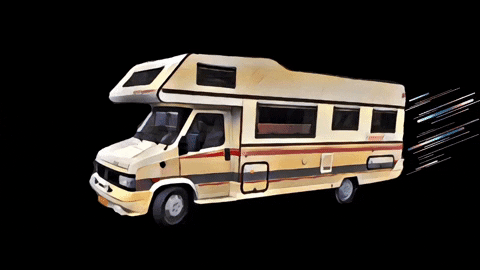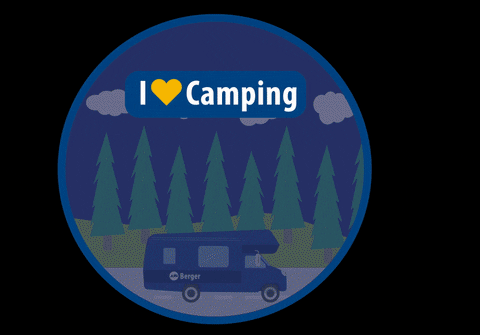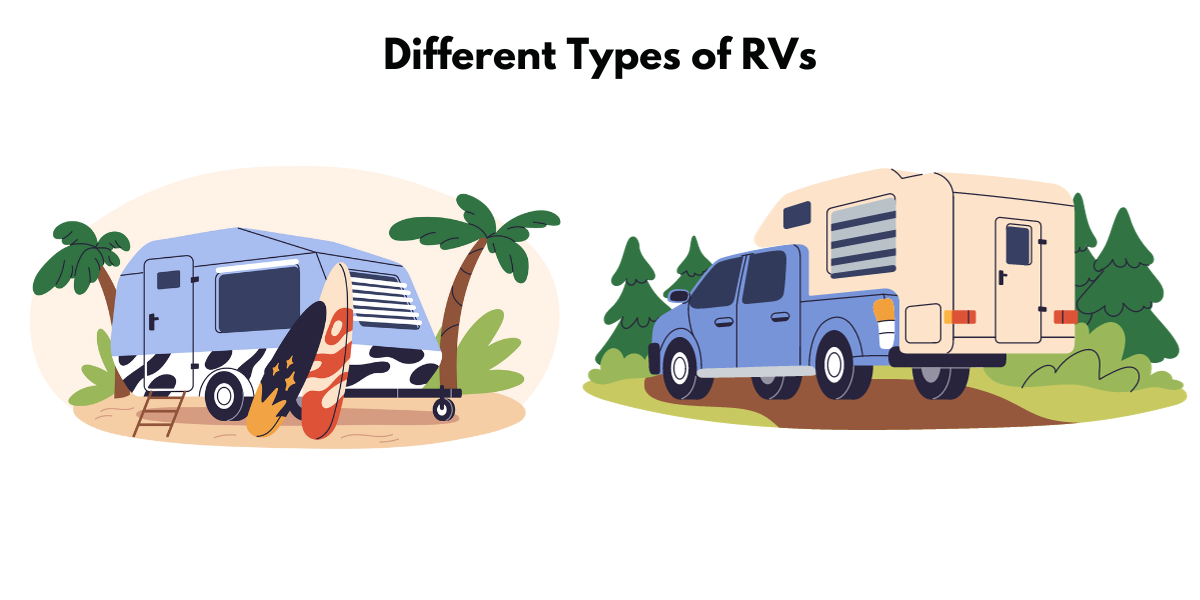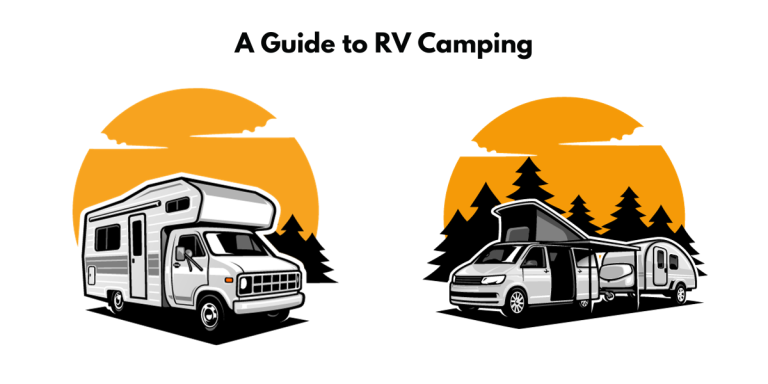RV Types: What are the Different Types of RV and Which is the Best for You?
Welcome to the World of RVs
Definition and Brief Overview of RVs
The term ‘RV’ stands for Recreational Vehicle which essentially is a motor vehicle or trailer equipped with living space and amenities found in a home. From weekend escapes to cross-country road trips, RVs offer a unique experience for nomads, explorers, or those just seeking a relaxed, convenient getaway.
The Variety Pack: Understanding Different Types of RVs
Class A Motorhomes: Luxury on Wheels
Nicknamed as the ‘King of the Road’, Class A Motorhomes are the epitome of luxury and comfort in the RV world. Built on the framework of commercial trucks and buses, these are the largest drivable RVs available and offer an upscale living experience on wheels. They provide ample space featuring a full-size kitchen, residential-style bathrooms, and sleeping and lounging areas, making them ideal for extended trips or full-time RV living.
Class A Motorhomes also include multiple slide-outs, enhancing both living and storage spaces. High towing capacity is another remarkable capability of these giants, enabling them to haul cargo trailers, other vehicles, or large toys such as boats.
These mobile mansions come both in gas and diesel options, often equipped with home-like features such as a washer, dryer, induction cooktop, and even a residential-size refrigerator. While gas engines typically power smaller, lightweight models, the heavier and larger models usually come with a diesel engine.

Class B Motorhomes: Compact Comfort
Also known as “campervans,” Class B Motorhomes are perfect for those who prefer compact, economical, and versatile RV units. Thanks to their small footprint, these RVs are nimble and fuel-efficient, making them ideal for both city adventures and cross-country road trips. The size of a Class B motorhome typically ranges between 17 to 19 feet, and they usually weigh anywhere from 6,000 to 8,000 pounds.
Designers put major ingenuity into these small machines, making them well-equipped camping vehicles. Despite their small size, they offer all the necessary amenities such as a sleeping area, restroom, and a small kitchen, often referred to as a galley kitchen. Most Class B motorhomes provide a bed that also functions as a dinette or living space during the day. A bathroom with a toilet, shower, and sink is also available, even though the area is notably compact.
Class B motorhomes come in both gas and diesel engine options. The easy-to-drive and maneuverable nature of these motorhomes is an added advantage. They can be used as a daily driver and are easily capable of handling the grueling demands of off-roading adventures with options like 4×4, all-wheel drives, and lifted tires. Despite their size, many Class B RVs can also be equipped to carry your favorite recreational items such as bikes and kayaks.
Class C Motorhomes: Balance of Size and Facilities
In the realm of RVs, Class C Motorhomes harmoniously blend amenities and size. Landing between Class A and B motorhomes, they range from 20 to 33 feet long. Offering a comfortable living space with additional sleeping quarters, they are a more budget-conscious option for large groups or families.
These mid-sized RVs, usually weighing between 10,000 to 13,000 pounds, are recognized by their distinctive cab extending over the cockpit. These cabs over bunk areas could serve as storage or extra sleeping arrangements, making them ideal for first-time RVers or those considering switching from towable campers to motorized ones.
Class C models provide a range of accommodating features such as a decent-sized kitchen, running water, and more. As such, they offer outdoor experiences for larger families at a more affordable price point than Class A Motorcoaches. The smallest models measure around 25’2″ in length, while the largest models stretch up to 39’4″ and can comfortably accommodate up to 9 people.

Pop-Up Campers: Light and Versatile Travel Homes
A perfect combination of comfort and portability, Pop-Up Campers are an ideal solution for beginner adventurers who want to level up from tent camping without breaking the bank. Also known as tent trailers or fold-out campers, Pop-Up Campers are lightweight, highly towable, and provide admirable interior space and amenities for their size, making them an excellent choice for weekend getaways, impromptu road trips, and even lengthier journeys.
Pop-Up Campers have a unique design that enables them to expand upwards and sideways, thereby providing a spacious interior environment. The size of these campers can range from 8 to 13 feet in length when closed, and they can weigh as little as a few hundred pounds. This makes it easy for most SUVs, and even some cars, to tow these campers, allowing for wider vehicle compatibility.
Teardrop Trailers: Small Yet Mighty Road Companions
Nicknamed for their distinctive shape, Teardrop Trailers are the embodiment of convenient simplicity. Evoking a nostalgic reminder of RV’s roots in the 1930s, these compact yet functional camping trailers offer a comfortable sleep space for two and a small kitchenette. Despite their compactness, Teardrop Trailers capture the essence of outdoor adventure in the purest form.
Teardrop Trailers are small and lightweight, typically less than 10 feet long and weighing less than 3,000 pounds, making them easy to tow even with smaller vehicles. Some larger models can reach up to 15 feet and offer more spacious accommodations and amenities. Their size, however, does not compromise their potential to offer a warm and green camping experience.
Fifth Wheel Campers: Providing High-end Residential Experience
Fifth Wheel Campers, affectionately known as “Fivers,” are the pinnacle of the towable RV world. These large and lavish campers offer an unmatched residential-style experience, packed with space and amenities, making them a favorite among those taking extended trips or living on the road.
Noted for its prominent overhang that rests above the tow vehicle’s bed, a Fifth Wheel Camper is typically attached by a special in-bed hitch in the tow vehicle, often a large pickup truck. This particular design offers stable towing due to the fifth wheel hitch centering the RV’s weight directly over the tow vehicle’s rear axle, leading to increased balance and better handling on the road.
Size-wise, Fifth Wheel Campers range from 22 to 40 feet in length and can weigh between 5,200 to 18,000 pounds. An abundance of space is one of the major selling points of these RVs, often extended by multiple slide-outs. These sliding expansions can accommodate larger living spaces, master bedroom suites, bunkhouse models, and even models with dedicated office or hobby space – perfect for those working remotely.

Toy Hauler RV’s: Traditional Trailer With a Twist
To describe Toy Hauler RVs as merely trailers would be a significant understatement. Uniquely designed and engineered, Toy Haulers are actually innovative hybrids between a traditional trailer and a mobile, ‘garage’ that can transport ATVs, motorcycles, kayaks, and a variety of ‘toys,’ hence the name.
Toy Haulers contain a built-in garage in the rear, accessible via ramp doors which often double as a patio deck – equipped with side railings and an overhead awning, contributing to an extended outdoor living space. This distinctive feature provides that much-needed flexibility for outdoor enthusiasts that most other RVs don’t offer.
Ranging from around 20 to 40 feet in length, Toy Haulers can weigh anything from 5,000 to 20,000 pounds and are available in both motorized versions and towable travel trailer styles. The customization and multi-utility space make Toy Haulers not only capable of hauling toys but also of housing additional living space, which can serve as an office, hobby room, workshop, or guest bedroom. The interior often features tie-down points to secure cargo during transit.
Travel Trailers: Home Away From Home for Many
Regarded as the most popular type of non-motorized RV, Travel Trailers, are a go-to choice for many campers. Their versatile design accommodates a vast array of sizes, layouts, and amenities. These trailers can be hitched to a broad range of vehicles, making them accessible to many potential RVers.
Travel trailers come in all sizes — from tiny, jelly-bean-shaped models with a chuckwagon kitchen at the rear, to large, house-on-wheels rigs featuring multiple slide-outs and residential-sized appliances. Depending on the model, they can weigh anywhere from 3,000 to 10,000 pounds.
Travel trailers are known for their wide and flexible living areas. Multiple optional slide-outs can create more room for features like a designated bedroom, kitchen island, dinette, or additional seating. Underbelly pass-through storage, accessible doors, and exterior pantry space open up a world of options to bring whatever you need to amplify your adventures. Some models, like the Airstream Flying Cloud, even come with an ‘office’ floor plan for remote workers.

Decoding the RV Lifestyle
RV Living: Pros and Cons
The decision to live full-time in an RV is a massive one, and it involves numerous factors from lifestyle to finances. However, the freedom and flexibility that RV living offers can be incredibly appealing. Let’s delve into some pros and cons of RV living.
The Pros
1. Freedom and Flexibility: RV living offers a new degree of freedom and flexibility. You can travel at your own pace and change your surroundings as often as you like. Ultimately, your home is wherever you park it.
2. Cost-Effective: While there are certain costs associated with RV living, it can often be less expensive than maintaining a traditional house, especially when it comes to utilities and upkeep.
3. Simplified Lifestyle: Living in an RV requires a minimalist lifestyle, as space is limited. This lifestyle can be liberating as it encourages you to focus on experiences over possessions.
The Cons
1. Limited Space: Even the largest RVs have less space than a traditional home. This might require a major downscaling of possessions and make hosting guests a challenge.
2. Expense: While it can be cheaper than traditional housing, RV living still comes with costs. These can include maintenance, campground fees, fuel, and possibly a monthly RV payment.
3. Challenges of Constant Travel: Regular travel can become tiring. Coping with different weather conditions, troubleshooting RV maintenance issues, and constantly planning the next moves can sometimes become stressful.
Inspiring Tales from the RV Life
There’s no shortage of inspiring tales and stories from those who’ve chosen the RV life. Countless people have transformed their lives by hitting the open road and embracing the endless adventures an RV lifestyle has to offer.
One enchanting tale is that of Chef RV – from Buffalo to The Big House. Once a Buffalo-based restaurateur, Chef RV sold his businesses, purchased a recreational vehicle, and started a new life on the road, venturing from Buffalo to the Big House. His passion for culinary arts, matched with a fervent desire to travel, led him to explore different cultures and regional foods along the journey, creating a series of fond memories around the country.
Then we have the Native Texans and Full-Time RVers who began documenting the adventures, challenges, and joys of RV life as they traveled across the Great State of Texas and North America. They seek to live like a local everywhere they go, exploring small towns, discovering history, and sharing those experiences with us all.

Finding Your Perfect RV Match
Considerations When Choosing an RV
Choosing the right RV that aligns with your preferences, lifestyle, and budget can be a daunting task – especially when you’re encountered with a wide array of options. Here are a few primary considerations you should account for when choosing an RV:
1. Your Purpose: Are you considering full-time RV living, or are short weekend trips more your thing? The length and nature of your intended use can significantly influence your decision.
2. Budget: It’s important to keep in mind not only the initial cost of the RV but also ownership costs such as servicing, insurance, and storage. Don’t forget to factor in the cost of the vehicle needed to tow your RV if you choose a towable model.
3. Size and Layout: Consider how many people will be consistently traveling with you. This will directly affect the size and layout of the RV you will need. Also, the larger the vehicle, the more challenging it may be to maneuver and park.
4. Amenities: What comforts and conveniences can’t you do without? Keep in mind, that the more luxuries an RV has, the higher the price tag.
5. New or Used: While a new RV offers the latest features and technologies, a used RV can significantly save costs.
6. Towable or Motorized: If you prefer driving and living in the same vehicle, choose a motorized RV. On the other hand, if you want more mobility at your camping locations, consider a towable RV.
Which RV is Right for You?
Choosing the right RV depends on the individual’s needs, wants, lifestyle, and budget. Here’s a brief guideline on which RV may be the right fit for different circumstances:
1. Solo Travelers or Couples: If you’re traveling solo or as a couple, a Class B motorhome or a teardrop trailer might be a perfect choice for you. These compact vehicles are easy to manage and offer all the necessary amenities.
2. Adventure Enthusiasts: If your travels are primarily driven by outdoor adventures such as dirt biking or kayaking, Toy Hauler RVs, with their built-in garages, are the best choice.
3. Full-Time RVers: If you’re planning to live full-time on the road, consider Class A motorhomes or Fifth Wheel Campers. These RVs provide ample space, and residential-like conveniences and can make the road feel like home.
4. Budget Conscious: For those on a budget, Pop-Up Campers or smaller travel trailers are suitable options. They’re compact, economical, and still offer an upgrade from traditional camping.
5. Large Families or Groups: Class C motorhomes or larger travel trailers provide enough space and amenities to comfortably accommodate larger families or groups.
6. Weekend Getaways & Short Trips: For short trips or weekend getaways, Class B motorhomes or travel trailers are excellent options.
Above all, the best RV for you is one that feels like ‘home,’ perfectly suits your lifestyle, and falls within your budget. Don’t rush the decision but take your time to explore all options and choose what resonates with your preferences and needs the most.

Frequently Asked Questions
What is the most popular RV type?
The most popular RV type, regardless of the intended usage, is the Travel Trailer. These types of pull-behind campers are sold the most each year and are available in a wide variety of sizes, layouts, amenities, and price ranges. The Travel Trailer’s diversity, along with its ability to be towed by a wide range of vehicles, adds to its popularity.
Whether you’re a solo RVer on a budget or a large family looking for elaborate amenities, there’s a travel trailer to accommodate your needs, thus enhancing their widespread appeal.
What type of RV is the easiest to drive?
For those unfamiliar with handling large vehicles or those who prefer more manageable sizes, the easiest type of RV to drive is the Class B Motorhome, also known as a camper van. These vehicles usually measure no more than 22 feet in length and handle much like a regular full-sized van.
Their compactness allows them to navigate city streets, tight turns, and parking lots with relative ease. The smaller size also means better fuel efficiency compared to larger RVs. With Class B motorhomes, you can access more places, including many locations where larger RVs may be restricted.
How to choose the best RV for your lifestyle?
Choosing the best RV for your lifestyle requires a careful evaluation of numerous factors. Here’s a process that can help you make an informed choice:
1. Assess Your Needs: Start by noting down what you need from an RV. How many people will be traveling with you? How often do you plan to use the RV, and what will be the length and nature of your trips? The requirement of a solo adventurer will be different from a large family’s needs.
2. Pick the Type: Decide on the type of RV based on your assessment. A Camper Van or a Travel Trailer may be more suitable for weekend getaways or solo adventures, while a Class A or Fifth Wheel Camper might be better for full-time living.
3. Evaluate Your Budget: Determine how much you’re willing to spend. RV prices vary substantially across the spectrum, so it’s crucial to make your choice within a comfortable budget. Don’t forget to take into account additional costs such as regular maintenance, insurance, fuel, and campground fees.
4. Consider Towing Requirements: If you’re considering a towable RV, take into account what your current vehicle can haul. Research the towing capacity of your vehicle and match it to an appropriate RV model. Alternatively, if you’re considering a motorized RV, take into account the size and driving complexity.
5. Work Lifestyle: Consider your work lifestyle. If you’re a digital nomad, ensure the RV layout accommodates a comfortable working space and that it can support the necessary technology.
6. RV Inspection: Always inspect an RV thoroughly before buying, checking for any issues with amenities, interiors, and exteriors.
7. Test Drive: This is especially important for motorized RVs. A test drive will give you a feel of the size, manageability, and performance of the RV.
Research and introspection are key in this decision-making journey. By identifying your needs and aligning them with the available options, you can find the ideal RV to set sail on your exciting journeys ahead.
- National Forest vs Park: Which One to Visit Next? (Comparison Guide) - January 9, 2024
- RV Types: What are the Different Types of RV and Which is the Best for You? - January 2, 2024



